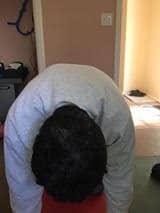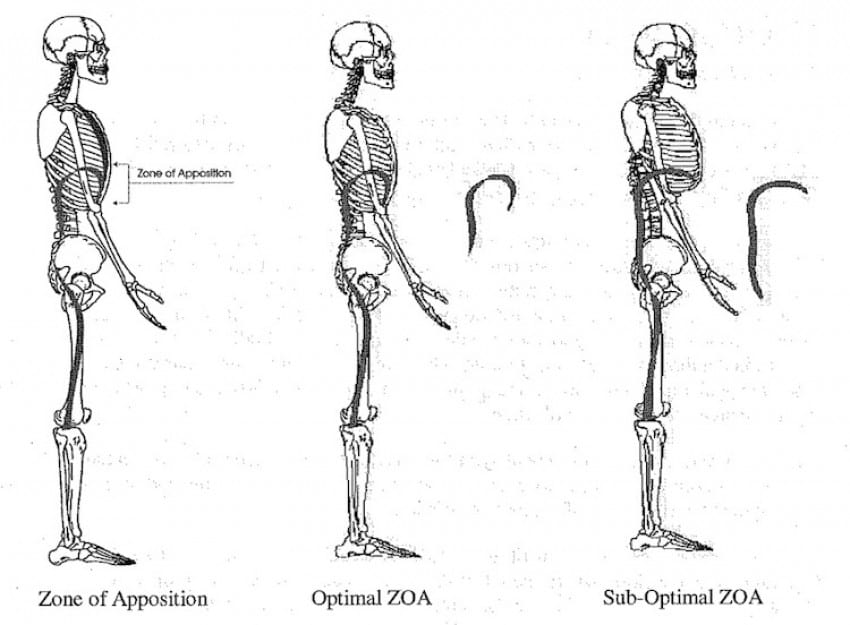Tyler Wall
The human body is an amazing, beautiful, extraordinary, asymmetrical, and resilient piece of organic machinery. The more I learn, the less I know and the more questions I ask. Studying from different methodologies allows one to formulate a deeper understanding of how anything works.
A quick and dirty overview on PRI
The Postural Restoration Institute provides a researched backed theory of the human body and our experience within the three planes of gravity. At quick glance, the human body may appear symmetrical, but under the hood we certainly are not and will never be. Our brain and organs are organized differently and our ability to breath is affected. This creates several loops where our brain and body are continuously sending and receiving feedback and adjusting. By nature, our right side (doesn’t matter if you’re left or right handed) is the dominant side, and if we let this side establish too much dominance, we become impaired. PRI focuses on understanding and addressing this imbalance – not by trying to make things even, but by allowing us to pass through a zone of neutrality. There is no “neutral”. Neutral does not exist. We are always (or should always) be shifting from side to side, without one overpowering the other. This reciprocal movement is what allows us to propel ourselves forward.
PRI is neurology. Our nervous system needs stability and we need to breath, even if our methods of breathing aren’t the most efficient or beneficial for our living. The body NEEDS TO SURVIVE. When we use parasitic strategies – overuse of accessory breathing muscles (chest, neck, shoulders, back, hips) instead of our main respiration muscles (think diaphragm), we will become locked up. If our breathing strategies are hampering our abilities to move, all the traditional stretching and strengthening in the world won’t do too much. We need to address this side to size imbalance, and we’ll do so through inhibiting planes where we’re locked up and reintegrating proper use of muscle chains in those same planes. The three big focus areas that need balancing are around the sacrum, the sternum and the sphenoid.
Consider that we breath 20,000-25,000 breathes a day. That’s a helluva lot of repetition. If we’re taking in air through ineffcient means, what kind of effect do you think those reps are having on your resting muscle tone, joint position, ability to destress, ability to move and ability to think? PRI addresses our autonomics – effectively breaking our extension/sympathetic patterns and restoring our ability to flex and rest.
PRI practitioners aim to help their clients/patients/athletes move and breath so they can live their lives, without being hampered by strategies that aren’t serving them. Several objective tests are used to find out which muscle chains are inactive and need to be balanced.
The three main courses are Postural Respiration, Myokinematic Restoration and Pelvis Restoration.
Down to the Postural Respiration course goodies
The focus of the Postural Respiration course is primarily dealing with our thorax, and all of the surrounding muscles/chains associated with it. First and foremost, we need to get our pelvis in the proper position before we stack anything else on top. While the pelvis is not the focus of this particular course, some rudimentary knowledge is helpful.
To put things simply, our natural asymmetry, if left unchecked, will rotate our pelvis to the right and the torso will counter rotate to the left. This is the body organizing itself so we can look and move “straight”.
The two patterns:
Left AIC/Right BC aka Right Stance
AIC – Anterior Interior Chain
BC – Brachial Chain
- This is the stance that we need to “let go of” as it becomes overdominating if we don’t check it
Right AIC/Left BC aka Left Stance
- This is where we want to go. Often elusive, but allowing us to shift over here allows us to move more smoothly, breath, rest, and rotate.

ZOA – The Zone of Apposition
The following is of paramount importance when understanding PRI concepts. The Zone of Apposition is the position you need to create to effectively let your diaphragm be a diaphragm, and not a postural stabilizing muscle, or a “pancake”. Heres a easy visual:
When you inhale, your diaphragm contracts and flattens down like a pancake. This is how you take in air.
When you exhale, you diaphragm is supposed to lengthen and dome like a parachute.
You can’t get a parachute from a pancake, but you can get a pancake from a parachute. Meaning, you need to properly exhale to properly inhale. Attempts the other way will not work. Get your ribcage in a proper position for the right AIC chain to do its thing and allow you to breathe properly.
When we inhale, the ribs are supposed to externally rotate to take in air – move out, not up.
When we exhale, the ribs are supposed to internally rotate down, in and back.
Part of our natural asymmetry has our left, weaker side stuck in external rotation while the stronger right side is internally rotated. We want to build the ability to let both sides do their opposites, and work together. Think of moving the ribs from a key ring to a hula hoop and back again.
Exhale -> Inhale.
Key Ring -> Hula hoop

Additionally, we need to be able to put air into our backs. Have someone face you and bend over so you can see the shape of their rib cages.

Most times, the right side of the back will have a much larger dome to it than the left. This is because it’s easier for us to breath this way. The left side anteriorly opens up like a beach ball due to several things, including our weaker left diaphragm. The better positioned, and stronger right diaphragm keeps the right side anteriorly closed down.
Here’s a great exercise to try.
Test
Lie down on your back and have someone check your passive range of motion at the shoulder. Alternatively, you can check your comfortable and active range of motion.
Exercise: All Four Belly Lift
Retest your ranges.
You will more than likely notice a considerable difference with your degrees of freedom. Setting up in this position can help restore movement through a couple of means.
1. By filling up your back (posterior mediastinum) with air, you’re effectively created a wonderful congruent ribcage for your scapula to move on.
2. The diaphragm is in an advantageous position to move, and your accessory breathing muscles get to relax – therefore allowing you to move your shoulders.
Whether you have or haven’t done any PRI exercises on your own, I want you to go forward thinking about the sequence of the components as being pieces of a symphony. When played at the right time in the right order, the result is beautiful. If something is missing, you’ll know it in your results. These require focus and precision, not to be done haphazardly or in a hurry.
Each instructed movement or position represents a phase of gait, because gait is movement and movement is living.
To wrap up:
- Our brain and our bodies are assymetrical. This is a wonderful thing. Let go of some conceived notion of symmetry. Making sure that we address any imbalances so the right side doesn’t win the tug of war will help to ensure that we can rest, relax and rotate.
- Don’t stay stuck. Develop options so you can do what you want. Break free from your normal patterns and utilize your body as you want.
- This is rehab. This is performance. This is allowing you to be a better human.
- If you’re interested in learning more, I implore you to take a course. If not, seek a practitioner and have them take you through an assessment and watch the magic happen.
The three main courses would be best taken in this order:
Links





5 Responses
I’m very interested in this work and would like more information. I have lateral pelvic tilt rt sided. I have knife sharp pain in QL with walking. It’s excruciating. My entire rt side higher than left side. I had rt spinal fusion with bone in 1972 at L 3,4,5.
Hey Anne. More information on PRI can be found at https://www.posturalrestoration.com/pri-resources . If you are looking for someone to work with you I can pass your info along to one of the group fully versed and immersed in the PRI system. Please provide an additional comment should you be seeking the latter.
I’ve been referred to this kind of program. I’m 60 years old. You can’t teach an old dog new tricks. I have to start over with P/T to learn how to BREATHE? My orthopedic hip & knee doctor rold me I need back surgery but I can’t find a surgeon who will actually perform the surgery. I just did 6 weeks of P/T earlier this year and to be told I watsed all that time and money, only to be told to go waste MORE time and money on this, is ridiculous.
I guess it starts with belief. Do you believe you can get better, and is it possible the thing you do thousands of times a day (within your torso, the location of pain) may be partly influential to your issues?
You can always use Google for free…